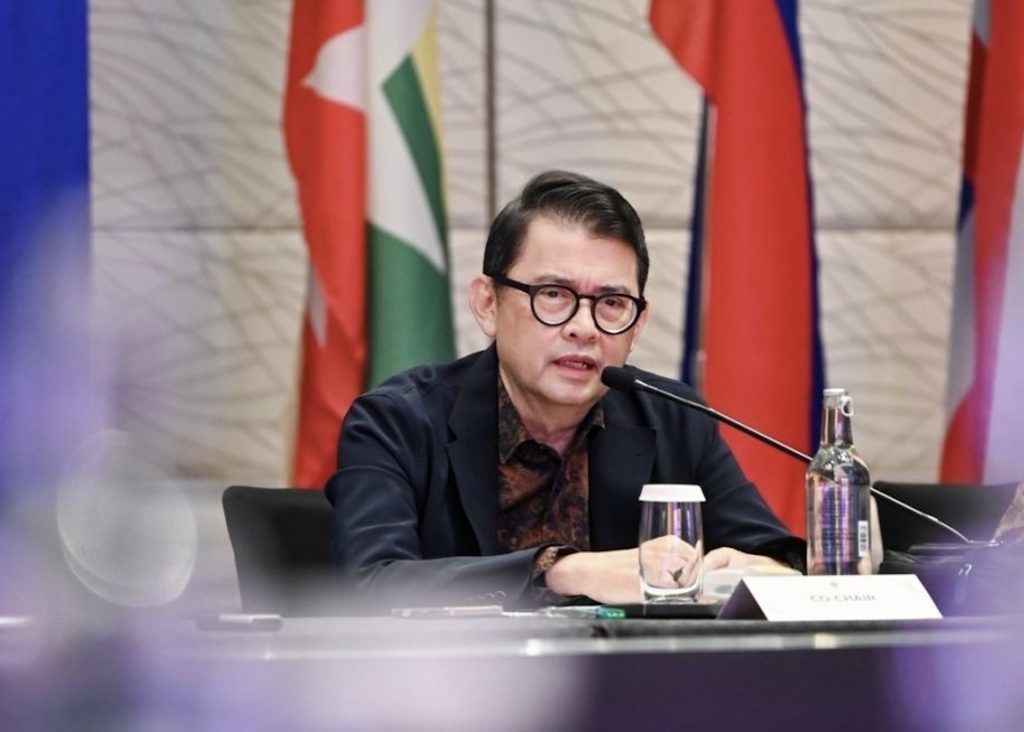
A Builder of Enterprise
September 22, 2025
Two Decades of Championing Entrepreneurship in the Philippines
October 6, 2025
United Colors of a Nation
“Grabe.”
This was what the First Lady texted to me, complete with a “disbelief” emoji.
I had just relayed to the First Lady some compliments from the current ASEAN-BAC chair, Tan Sri Nazir of Malaysia, who was all praises for the warmth and hospitality she extended at a cocktail party we hosted at the Manila Polo Club for our ASEAN friends.
The virtual conversation with her turned to the corruption scandal currently rocking the country. Judging from the current spirited talk around the country – from the country’s boardrooms to the barangay halls – everyone seems to be in agreement that we need to unite against those who steal from the national coffers. I told her that I think the President is doing the right thing in calling out the rampant corruption. I said that this might be a watershed moment for uniting Filipinos, regardless of political color.
Any color will do, she said, as long as we get rid of all this corruption which has spread not just to flood control projects, but even to school buildings and structures dedicated to the arts.
The Philippines has long been divided by factions. There were the regional factions in the olden days, then the political factions of Nacionalistas and Liberals and, in the last few decades, allegiances that have been defined by colors. The yellows, the reds, the pinks, the greens, the blues. They have come to define more than political allegiances, but even to deeply held beliefs.
Colors have long served as powerful symbols in human culture, evoking emotions, signaling values and uniting people under common ideals. In the context of nations, colors can express patriotism and move people to unite under one cause. We even start early: blue was Ateneo and green was La Salle.
Patriotism, too, is often expressed through the display of national colors, and these resonate with citizens’ emotions and sense of identity. It is common practice to reinforce a sentiment, like loyalty to a sporting team or a cause, by wearing a particular color. It is a personal declaration of loyalty and pride, transforming individuals into ambassadors of their nation or their belief.
Colors can also evoke historical contexts that shape patriotism. Yellow, for example, became the color of the EDSA Revolution. Many years later, color became widely used to signify support for causes. In the Philippine context, color became the symbol of political allegiances, so much so that people have been branded in terms of colors (“dilawan,” “pula,” “pink,” etc.).
And it became very divisive. As colors serve as a reminder of the shared values that bind a nation together, they also threaten to tear it apart.
In societies that respect differences, colors can come together to represent harmony, cooperation and mutual respect among different groups. Instead of defining ourselves through our colors (read: allegiances), maybe we as Filipinos should celebrate the fact that we are free to express our diverse opinions, and this should inspire us to respect ideas instead of flatly rejecting one another based on preconceived notions. Maybe we can look at patriotism as not limited to a singular identity but instead enriched by the contributions of all its constituents.
The colors in the Philippine flag reflect our history, our struggle for freedom and our values. They remind us of our collective history and the sacrifices made for our freedom. Despite our current differences, we as Filipinos share a history, and we all want our country to prosper. Today, we are again faced with a low point, as unbridled corruption threatens to undo the years of hard work that are being done to bring our country to its long-overdue prosperity.
I wrote in a previous column about how corruption undermines the efforts of our MSMEs. How can entrepreneurs be confident that they can play fair and square in a system that rewards the crooked? Why should they pay taxes when it will only end up lining the pockets of the corrupt? Their doubt is understandable.
Maybe we can use this collective rage to finally unite under one flag, not to advance any particular ideology or political group, but to put an end to this affliction that has gone on for far too long, and have only one color – the colors of the Philippine flag.
As I return home from a week of meetings with fellow ASEAN businessmen and government leaders, I feel the gravity of the current situation in the Philippines, and I can’t help but share the President’s frustration. Years of work are at risk of being undone, and this at a time when there is so much potential for the country as ASEAN accelerates toward economic integration. At the ASEAN meetings, we talked about regional food security, the potential of the creative industries to create jobs, enhancing our region’s supply chain resilience and so much more. There was energy among the attendees, with all seemingly ready to take advantage of what could be a great future for the countries of ASEAN.
As nations grapple with challenges in a globalized world, the significance of colors remains a powerful tool for fostering unity and reinforcing the essence of what it means to belong to a nation. Ultimately, these colors serve not only as visual representations but as enduring symbols of hope, resilience and the continuous journey toward a more inclusive future. Let us not waste this opportunity to unite.
Originally Published in Philippine Star


2/F RFM Corporate Center, Pioneer cor. Sheridan Sts. Mandaluyong City, Metro Manila, Philippines

